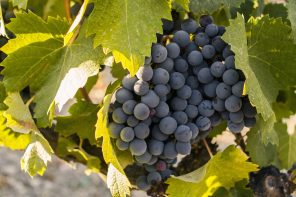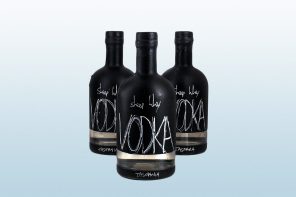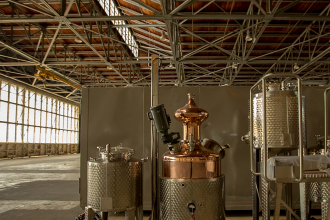Three, all-too familiar words can sum up what happened to Australia’s wine market: Boom. And. Bust.
It’s a tragic tale, actually. One fraught with corporate bandwagons, eager growers and one brightly colored wallaby on a black bottle. How to put this delicately… There are strong indicators that Yellow Tail helped propel the entire Australian wine industry into an epic downward spiral. Not to point fingers – but if the neon yellow label fits?
Brand Australia
This little wallaby (it’s okay, we thought it was a kangaroo too) was a driving force in the sale of “Brand Australia,” a government backed marketing push to promote the Australian identity overseas. The Yellow Tail packaging was iconic, colorful and easy to remember. Combined with low price points and pleasing jammy fruit, the American palate was delighted. They were the perfect bang for your buck kind of wines and we guzzled them by the pallet. Yellow Tail launched in 2001, selling about 200,000 cases. The following year it sold 2.2 million cases. YUGE. Right?
One-Hit Wonder
Who remembers Napster? MySpace? Things that completely took over the American way of life for a minute there? Sadly, Australian wine became one of these fads. Because of the sudden and huge popularity of Yellow Tail, Americans came to think of all Australian wine as fruity, overripe and cheap. Good for catching a quick buzz when you want to grab a bottle from the grocery store, but lacking in any element of sophistication. This turned the Australian wine craze into a doubleedged sword: the exact same reasons Australian wines soared to popularity also doomed them to failure.
Lessons in the World Economy
Grape growers and producers amped up production to try to meet the insatiable American wine desires. Between 1995 and 2005 – during which time consumption peaked – more and more vineyards were being planted. Yields were being increased. Investments were being made. Because Yellow Tail had so much success so quickly, it created a general feeling that it would continue forever.
If you’re starting to draw a comparison between this wine “bubble” and a recent housing bubble, you’re officially the brightest crayon in the box. If you didn’t… well, we just told you. In much the same way that a housing bubble drives people to buy houses, thinking that values will continue to soar, people continued to plant vines and increase production, thinking the demand would go up and up and up.
But they didn’t. Fruit-bomb fatigue hit, and it hit hard with Americans banishing Australian wine imports to the bottom shelf. To make the wine’s reputation even worse, Aussie growers were left with an abundance of both grapes and finished wine that had to be sold off quickly, flooding the bulk wine market. Plus, in the years when Americans were guzzling the stuff, Australians themselves didn’t catch on to the craze and sales within the country remained extremely average. Then, to top it off, the financial collapse of 2008 kicked Australia while it was down and sales couldn’t recover.
The Next Chapter
Fast-forward to present day, and there’s actually good news: the dark times are shifting for Australian wine. The tides turned in 2013/2014 and sales are steadily improving. A key element of this has been emphasis on cooler-climate and regionally specific wines. It’s easy to forget that Australia is roughly the same size as the continental United States! You wouldn’t just call a wine from the U.S. “American”- we have California, Washington, New York, Oregon and hundreds more specific regions – as does Australia. It’s not just one big giant, syrupy, jammy fruit blob. Exciting times are certainly ahead and there’s all of Australia for us to discover, starting with this month’s Paxton, “MV,” Cabernet Sauvignon… no disrespect to wallabies.








